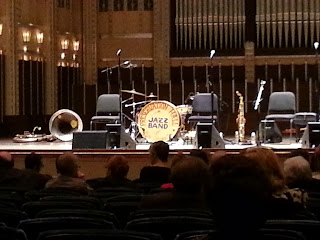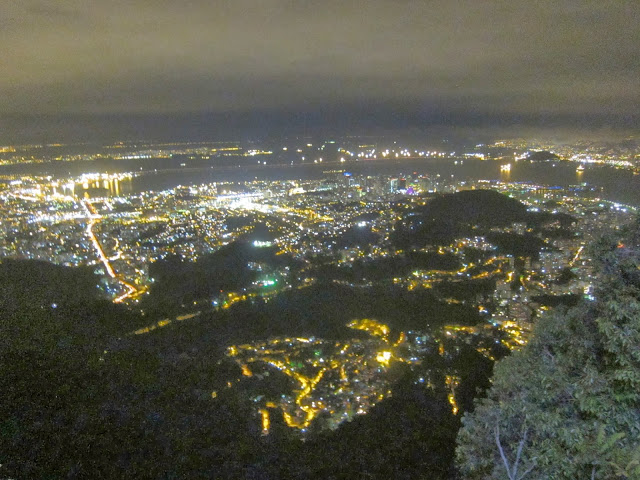photo credit: Ken Howard, Metropolitan Opera
One of the greatest innovations to come to the opera world is the Met HD live broadcasts, especially for those of us outside of New York and/or living in cities without opera companies. It is almost opera porn—the viewer sees every pore on the face of the singers, every hair, every bead of sweat, every breath and every button. There is a funny scene in 30 Rock where the actors all walk in front of an HD camera and cartoon caricatures of them are revealed...
To further pander to the voyeuristic thrill of watching an HD broadcast, the camera takes us back behind the curtains, where breathless singers are interviewed in front of millions just seconds after delivering their climactic arias. We see sets rolled around and interviews with various personnel.
Yesterday's broadcast of "The Nose,"a short (two hour) opera is based on the absurdist short story by Nicolai Gogol written in 1836.
(Read story here).
It has been called a precursor to magic realism, and is a ridiculous satire of petty beauracracy and Russian self-importance, full of bawdy and burlesque characters. According to critic D. S. Mirsky, Gogol "displays his extraordinary magic power of making great comic art out of nothing." Somehow it has survived the test of time and many reimaginings in various mediums, including, I would propose, Woody Allen's "Sleeper."
Shostakovitch wrote the opera at age 21 in 1928 during the brief window of artistic freedom before Stalin shut the door on composers and dictated more conservative and melodic compositions. The score is simply wild. It jumps around in manic delight—there is scarcely a melody or musical line to be found—with singers often barking, laughing, hooting and shrieking in disjunctive phrases and at very high pitches. There is an amazing drum solo, quite jazz-like, which is purported to be the first drum solo ever. Anywhere. Jazz and rock musicians genuflect now. The music was so alarming that it was never actually performed after its initial introduction until 1974, when an old copy of the score was found in the Bolshoi theater. That performance that was attended by the composer in the the last year of his life, It didn't make it to American shores until 2004.
What saved this production from being an incomprehensible muddle of noise and narrative fragments was the artistic set design. And here is where the advantages of watching an HD production really come to the fore. The interview with William Kentridge, the producer, set the whole production in context before viewing it, and made the interesting collage of mediums vastly more understandable.
As Henry Stewart writes in the most fantastic and perfect review "William Kentridge, the South African visual artist with a retrospective currently
at the MoMA,
concocts new combinations here: music and theater, yes, but also
animations, light shows, sculpture, collage. It's like watching
animation performed live, seeing an art instillation brought to life."
Read Entire Review Here.
This production is almost a new artform itself. As Steward points out, Opera is already a pastiche form, joining theater and music, but in this production is is taken to the nth degree: Dancers, puppets, film, animation. The set itself is the predominant character in the opera with a wonderful collage of soviet images and titles scrolling across as fantastical creatures and animations gallop around. It is as relentless and manic as the music itself. The musical interludes in particular give Kentridge license to unleash.
The HD version shows us a conversation in which Managing Director Peter Gelb interviews Kentridge about the process of construction this visual panoply. The two visited St. Petersburg together to see a production of The Nose in preparation for mounting this production. (Sounds fun, doesn't it?) Kentridge spent his days rummaging through antique and secondhand stores, picking up old Soviet kitsch and early encyclopedias. In the interview he speaks of wanting to also pay homage to the early soviet artistic creativity before it was shut down by the mandates of state ordered art, (by which I assume he means Socialist Realism). We certainly get to enjoy the bounty of his thrifting and his brilliant vision of a new hybrid opera art form.
The New York Times just did a fascinating profile of Peter Gelb, great nephew of Jascha Heifitz, two weeks ago, in which we learn that he usually works from 4 am to midnight.
Peter Gelb article
And because pictures and music speak more than words, here is a link to an excerpt to give a taste of this pastiche perfromance art and the musical frenzy to which it is set:
Excerpt










































